View of Hebron

Hebron 1

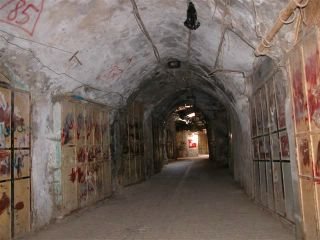
Hebron2


Hebron3


Hebron 4

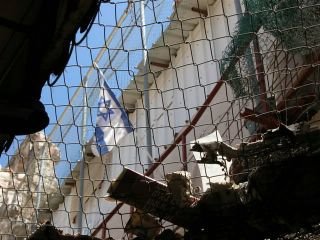
Hebron 5


Hebron 6


Hebron 7


Hebron 8


Hebron 9

Hebron
Hebron is located 30km south of Jerusalem. Its elevation from sea level is about 1000m. Hebron is famous for its grapes, limestones, pottery workshops and glassblowing factories. It is also home of the nationally famous Al-Juneidi factory for dairy products. The old city of Hebron is characterized by its narrow and winding streets, the flat-roofed stone houses, and the old bazaars. It is the home of Hebron University and Palestine Polytechnic University.
The most famous historical site in Hebron sits on the Cave of Machpelah (Arabic: المسجد الإبراهيمي, or masjid al-Ibrahimi; Hebrew: מערת המכפלה, or me'arat ha-machpela). The site is considered holy by all three Abrahamic faiths: Islam, Christianity, and Judaism. According to the book of Genesis in the Bible, Abraham purchased this cave and the field around it to bury his wife Sarah. Jews believe that Abraham, Sarah, Isaac, Rebekah, Jacob, and Leah are buried in the cave. The cave is the second holiest site in Judaism, and Churches, Synagogues, and Mosques have been built on this site throughout history (see "History", below). Today, the Ibrahimi Mosque sits on most of the site; part is used as a synagogue by Jews.
History
Hebron is one of most ancient cities in the Middle East, and one of the oldest continuously inhabited cities in the world. Hebron was an ancient Canaanite royal city, which according to archaeological findings was probably founded in the 35th century BC, and mentioned in the Bible as existing during the 18th century BC.
Hebron became one of the principle centers of the Tribe of Judah, and the Judahite David was anointed King of Israel in Hebron and reigned in the city until the capture of Jerusalem, when the capital of the Kingdom of Israel was moved to that city. After the destruction of the First Temple, most of the Jewish inhabitants of Hebron were exiled and their place was taken by Edomites. Herod the Great built the wall which still surrounds the Cave of Machpelah. Jar handle stamps bearing Hebrew letters dating from 700 BC, the oldest known inscription naming the city, have been found in Hebron (see LMLK seal).
During the first war against the Romans, Hebron was conquered by Simeon Bar Giora, the leader of the Zealots, but eventually became part of the Byzantine Empire. The Byzantine Emperor Justinian I erected a Church over the Cave of Machpelah in the sixth century CE which was later destroyed by the Sassanids.
The Islamic Caliphate established rule over Hebron without resistance in 638. During this period, Muslims coverted the Byzantine Church at the site of Abraham's tomb into a Mosque. Trade was greatly expanded, in particular with Beodins in the Negev and people east of the Dead Sea. Muslim and Christian sources note that Umar allowed Jews to build a synagogue and burial ground near the cave of Machpelah.
The Christian Crusader Godfrey de Bullion, took Hebron in 1099 and renamed it, "Castellion Saint Abraham". The Crusaders changed the mosque and the synagogue to a church and expelled Jews living there. After their defeat by Saladin in 1187, the name of the city was changed back to "Hebron". Richard the Lion Hearted subsequently took the city soon after. In 1260, the Berber Ruchan a Din and established Mamluk rule; the minarets were built onto the structure of the Cave of Machpelah/Ibrahami Mosque at that time. In 1516, Hebron fell under the rule of the Ottoman Empire. In 1831, Ibrahim Pasha of Egypt took over Hebron until 1840.
In December 1917 and during World War I, the British occupied Hebron. In 1929, 67 Jews were killed, 60 wounded, and Jewish homes and synagogues ransacked in the anti-Jewish Riots in Palestine of 1929. The British did not intervene in the rioting. Two years later, 35 families moved back into the ruins of the Jewish quarter, but after further riots, the British Government decided to move all Jews out of Hebron "to prevent another massacre". Hebron remained as a part of the British mandate until 1948.
In 1949, Jordan took over the control of Hebron and the rest of the West Bank; after the Six Day War, in June 1967, Hebron and the rest of the West Bank came under Israeli control (See Israeli-occupied territories). Since early 1997 the city has been divided into two sectors: H1 and H2. The H1 sector, home to around 120,000 Palestinians, came under the control of the Palestinian Authority, in accordance with Hebron Protocol. H2, which comprised of around 30,000 Palestinians, remained under Israeli control due to the presence of around 500 Jewish Israeli settlers living in an enclave near the center of the town. During the last five years, the Palestinian population in H2 has decreased by 20,000 and the current figures show that only around 10,000 Palestinians continue to live in this sector. The reason for this is the continuing harrassment of the Palestinians by the settlers, with the Israeli army standing idly by. In 1994 an Israeli Jewish settler Baruch Goldstein opened fire on Muslims at prayer in the Ibrahimi Mosque, killing 29. This event was condemned by the Israeli Government and polled Israelis. Israel banned the right-wing Kach movement as a result. The UN subsequently established an international unarmed observer force - the Temporary International Presence in Hebron (TIPH) to maintain a buffer between the Palestinian Arab population of the city and the Jews residing in their enclave in the old city. On 2006-02-08 TIPH temporarily left Hebron after attacks on their headquarters by some Palestinians angered by the Jyllands-Posten Muhammad cartoons controversy.
Jewish settlement after 1967

IDF soldiers clash with Palestinian youth in Hebron, 2000

Following the Six-Day War of 1967, a group of Jews disguised as tourists, led by Rabbi Moshe Levinger, took over the main hotel in Hebron and refused to leave. They later moved to a nearby abandoned army camp and established the settlement of Kiryat Arba. In 1979, Levinger's wife led 30 Jewish women to take over the Daboya Hospital (Beit Hadassah) in central Hebron. Before long this received Israeli government approval and further Jewish enclaves in the city were established with army assistance. This process of expansion of the Jewish presence is continuing and there are now more than 20 Jewish settlements in and around the city. Jews living in these areas and their supporters claim that they are resettling areas where Jews have lived since time immemorial, but the presence of Israeli settlements in these areas is condemned by many foreign governments and the United Nations as a violation of international law.
In 1997, an association comprised of some descendants of pre-1929 Jewish residents of Hebron published a statement dissociating themselves from the then-current Jewish settlers in Hebron, calling them an obstacle to peace.
Cultural, historical and sporting landmarks
Adjacent to the municipality building, Hebron archaeological museum has a collection of artifacts from the Cannanite to the Islamic periods. The Oak Of Abraham (Ibrahim), also called Oak of Mambre is an ancient oak tree which marks the place where according to tradition Abraham pitched his tent. It is estimated that this oak is approximately 5000 years old. The Russian Orthodox Church owns the site and the nearby monastery.
Languages and accents
Palestinian Hebronites are known amongst the Levant for their distinguished colloquial Arabic accent. Hebronites speak while stretching their words giving it a long musical sound.
Hebron, Hebron, Hebron
By Theo Haddad
Not much has been heard recently about what is actually going on between the Israelis and Palestinians. Indeed most American consciousness regarding the Arab / Israeli conflict is limited to the most vague ideas and presumptions; those that limit the conflict to things like religion, land, war, and terrorism. As such, any semblance of understanding of the issue is eliminated, and with that, the opportunity to resolve what is just.
It is important not to resign oneself to the idea that this is a conflict that is too old and complicated for understanding. On the contrary, any willing person can understand what is going on if they only have the desire to learn. Unfortunately, this desire is severely lacking in America concerning all issues. The Arab / Israeli conflict is not an exception.
So what has been going on on the Eastern shores of the Mediterranean? The current situation has the Palestinians and the Israelis deadlocked over the issue of Hebron. Hebron is a town on the West Bank, of about 100,000 Palestinians and 450 Israeli settlers. Settlers are people who believe it to be their God given right to reside anywhere in greater Israel. They are largely regarded by both side as religious fanatics, but they serve an Israeli cause by maintaining a Jewish presence in what would otherwise be Arab land. Their occupation of Arab land is internationally recognized as illegal, but the Israeli government permits and in fact encourages the settlement. Bibi Netenyahu has already proposed expanding old settlements and building new ones. Read more...
International Solidarity Movement " Hebron Region
THE 1929 HEBRON MASSACRE
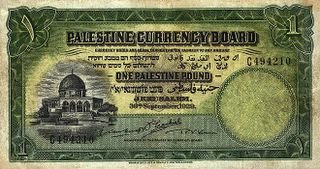
Palestine One Pound Note 1929 Front


Palestine One Pound Note 1929 Back


A Palestinian man (C) is searched by an Israeli border policeman in the Old city of the West Bank town of Hebron April 12, 2006. The United Nations advised its aid agencies on Tuesday to avoid having contacts with Hamas political leaders, but balked at U.S. calls to isolate the cash-strapped Palestinian government. REUTERS/Nayef Hashlamoun



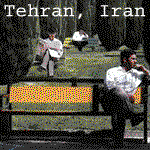


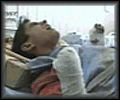








0 Comments:
Post a Comment
<< Home